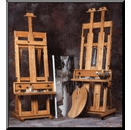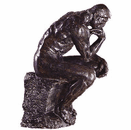The Oboe Video (DVD)
Product Description:
This program discusses the history and development of the modern day oboe. It reveals that the concept for the construction of the instrument existed in ancient Egypt, Greece, and the European Middle Ages, and that depictions of the archetype found on time period artifacts reveal a vastly different appearance. With adaptations in 17th century France, the instrument took on a form much closer to today's oboe. Its modern day construction and remarkable characteristics, like its double reed are examined, and its relationship to other members of the double reed family are explained. Moving through the centuries, the compositions of some of the greatest masters, including Bach, Mozart, Beethoven, and Strauss, featuring the instrument are shared. These masterpieces and their explanations illuminate the distinctive beauty, sound, and versatility of the oboe as it fills a number of roles and expresses a range of moods.
View a Preview Clip
View a Preview Clip
- ISBN: 978-0-7365-5925-6
- Run Time: 28 minutes
- Copyright: 1997
- Close Captioned: Yes
Customer Reviews
Copyright © 2002-2025 Madison Art Shop™ LLC. All Rights Reserved.
















